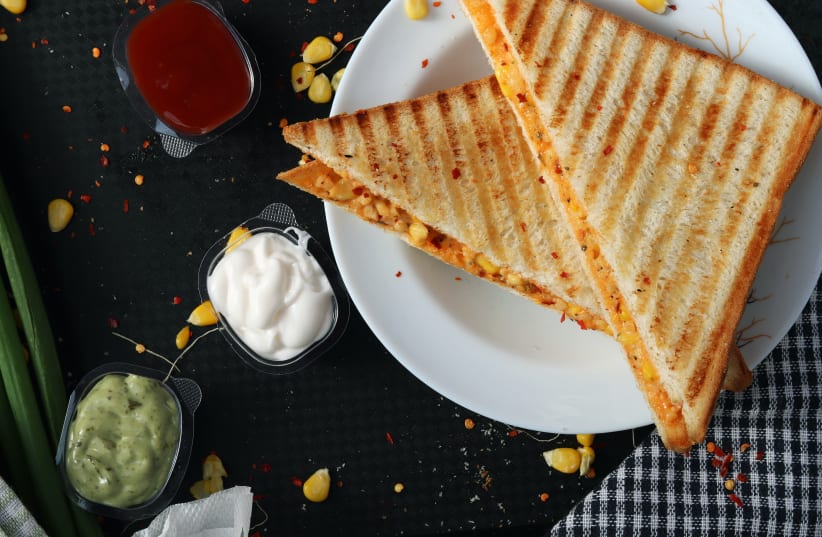According to Greek mythology, ambrosia was the food of the gods. It was brought by doves to the deities on Mount Olympus, and was eaten at their heavenly feasts. Ambrosia was purported to confer longevity or immortality on whoever consumed it.
While the Greek gods may have partaken of their divine sustenance on high, let us explore the derivations of some of the dishes that we mere mortals enjoy here on Earth.
We’ll start with the simple sandwich. A staple around the world for centuries, the sandwich originated in England in 1762 with John Montagu, the 4th Earl of Sandwich. As the story goes, the nobleman had a passion for playing cards. One evening, he was so involved in the act that he did not want to leave the gaming table to have dinner, so he asked that a serving of roast beef be placed between two slices of bread so he could eat with his hands rather than using a plate and utensils.
Another widely popular dish whose name bears its European origins is the hamburger. It started out in the form of Hamburg steak from Hamburg, Germany. In the Middle Ages, the Tatars, or Tartars, who invaded Eastern Europe ate their shredded beef raw (hence the dish called “steak tartare”).
When the invaders introduced that form of beef to Germany, the raw meat was mixed with local spices and was fried or broiled and became known as Hamburg steak. German immigrants brought Hamburg steak to the US, and the dish began to appear on New York restaurant menus in the 1880s. Hamburgers became a sensation as sandwiches at the 1904 World’s Fair in St. Louis, as they were portable and easy to eat while exploring the fairgrounds.
As for pizza, we can thank Italy for that delicious dish. It was invented in Naples as a fast, affordable meal for working-class Neapolitans. Pizza marinara, for example, was topped with tomato, oregano, garlic, and olive oil. It was called “marinara” because it was the dish that was traditionally made by la marinara, the fisherman’s wife, who prepared it for her husband when he returned home from his fishing trip in the Bay of Naples.
While the name of the marina reflects its humble beginnings, the Margherita pizza owes its moniker to the upper crust. In 1889, King Umberto I and his wife, Queen Margherita of Savoy, visited Naples. Chef Raffaele Esposito served the royal couple a pizza that highlighted the colors of the Italian flag – red (tomato), white (mozzarella cheese), and green (fresh basil) – and named the dish in the queen’s honor.
Why are the elite referred to as the “upper crust”? One interpretation is that in medieval times, the top portion of a loaf of bread was considered to be the best part, and was thus served to the master of the house and honored guests. Another variation says it was only the wealthy element of society that could afford to bake pies with not just the bottom crust but the top layer as well. In either case, the connotation is that the upper crust had a lot of “bread” or they were “rolling in the dough.”
Naturally, the mention of pies brings us to the dessert section of the menu. The icing on the cake, so to speak. From A to Z, the following sweet treats are all extremely appetizing and their origins equally enchanting.
Apple Brown Betty is a dessert that dates to colonial America, made with apples and buttery, sweetened breadcrumbs. The apples are baked, and the crumbs are placed in layers between the fruit. It is usually served with lemon sauce or whipped cream. The recipe is attributed to Mary Hinman Abel, a New Yorker who was a pioneer in nutrition. The recipe was part of a series of menus that she submitted to the American Public Health Association in 1888 that were designed to feed families healthily and economically.
Another dessert that emanates from the Big Apple is Baked Alaska. It consists of ice cream on top of sponge cake, which is encased in meringue and baked briefly in the oven to brown. One version says the recipe was created and named by French chef Charles Ranhofer at Delmonico’s restaurant in New York, to celebrate the US’s purchase of Alaska in 1867.
At around the same time, Boston gave rise to the dessert that came to be known as Boston cream pie. The dish dates to the early days of The Parker House Hotel in Boston (now the Omni Parker House Hotel). French chef Raelyn, who headed the hotel’s culinary staff from 1865 to 1881, is credited with creating the recipe, which consists of a layer of custard between two layers of cake, with the top glazed with chocolate ganache. It was originally called chocolate cream pie or Parker House chocolate cream pie. In 1958, General Mills introduced a boxed cake mix based on the original recipe. In 1996, the Massachusetts legislature declared the Boston cream pie as the official state dessert.
We leap over to another hotel on another continent for the pavlova, which is a meringue-based dessert with a crisp crust and a soft, light interior, usually topped with fruit and whipped cream. The dish bears the name of renowned Russian ballet dancer Anna Pavlova. According to some sources, Australian chef Herbert Sachse created the dish at Perth’s Esplanade Hotel in 1935. The hotel manager remarked that it was “as light as Pavlova.” Sachse is reported to have explained, “I had always regretted that the meringue cake was invariably too hard and crusty, so I set out to create something that would have a crunchy top and would cut like a marshmallow.”
While the pavlova was named for a prima ballerina, Peach Melba was dedicated to an opera diva. A sundae-like dessert that consists of vanilla ice cream, fresh peaches, and raspberry sauce, Peach Melba was created in 1893 by French master chef Auguste Escoffier at London’s Savoy Hotel, to honor Australian soprano Nellie Melba, who was a guest at the hotel.
Earlier that century, Austria laid claim to the Sacher torte. This rich dessert consists of two layers of dense chocolate cake with a thin layer of apricot jam in between, coated from top to bottom with a dark chocolate glaze. It is traditionally served with unsweetened whipped cream.
As legend has it, Austrian foreign minister Prince Klemens Wenzel von Metternich asked his kitchen staff in 1832 to create a special dessert for a dinner to be attended by high-ranking guests. The palace’s head chef had fallen ill that evening, leaving the apprentice chef, 16-year-old Franz Sacher, to dream up a dessert on the spot. The guests loved the dish, and it became known the world over as Sacher torte. The creative young Jewish trainee went on to become a reputed confectioner. In 1876, his son Eduard opened the five-star Hotel Sacher in Vienna, where the Sacher torte holds pride of place.
If the following racy tale is true, we go from a royal palace to a so-called pleasure palace to trace the origin of Italy’s famed tiramisu. This dessert is made of ladyfingers dipped in espresso, layered with lightly sweetened whipped cream and mascarpone, flavored with cocoa. The coffee and cocoa can well account for the name of the caffeine-laced dish. It comes from the Italian phrase tireme su, which means “pick me up.” As the story goes, the aphrodisiac dessert originated in the Italian province of Treviso in 1800, allegedly invented by the mistress of a brothel who offered it to customers at the end of the evening to reinvigorate them before they returned home to their wives.
Rounding off the dessert menu is zabaglione, another Italian innovation. It is a light mixture of whisked egg yolks, sugar and sweet wine, which is served either hot or chilled as a beverage or a custard dessert. The root of its origin is also a mixture, spanning from 1471 to the 16th century, whether soldiers in Emilia-Romagna, monks in Piedmont, or the court of Caterina de’Medici in Tuscany. The name is thought to be derived from sabaia, which was a kind of beer made from barley that was consumed in Illiriya, an ancient region in the western part of the Balkan Peninsula. The creamy French dessert sabayon is an adaption of zabaglione.
In conclusion, this is just a taste of the many intriguing backstories that history has brought to the table. ■

